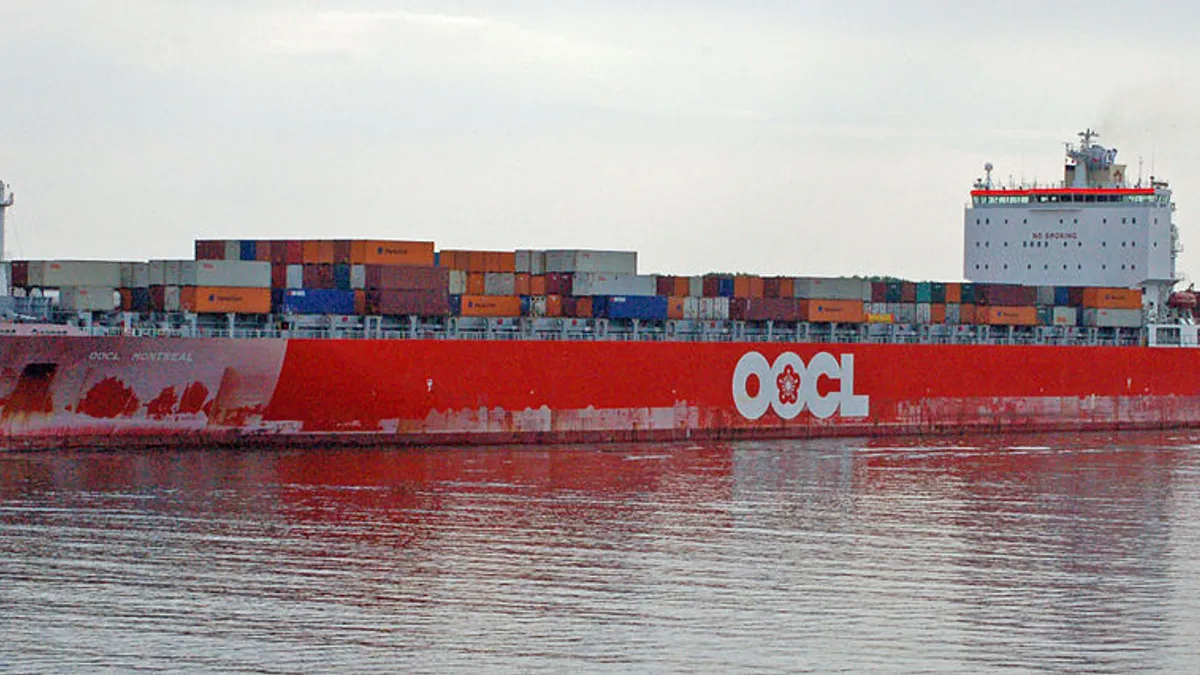Dive Brief:
- OOCL will introduce a bunker recovery charge to cover the "surge in ... operating cost" of meeting International Maritime Organization (IMO) sulfur cap regulations by January 2020.
- The shipping line will base the charge on a floating bunker formula, calculated using factors such as type of fuel, fuel prices and ship capacity.
- OOCL plans to begin its transition to low sulfur fuel in the second half of 2019. It did not specify when the bunker recovery charges would take effect.
Dive Insight:
OOCL joins a host of other carriers announcing charges to cover what's expected to be a $60 billion cost to the shipping industry.
Each carrier is taking a slightly different approach to surcharges. Maersk announced a bunker adjustment factor to determine surcharges based on fuel prices and route. Hapag-Lloyd introduced a new cost formula known as the "Marine Fuel Recovery" that accounts for consumption and market fluctuations.
OOCL expects its transition to compliant fuel to cost it more than $500 million — costs the carrier says it cannot take on alone in "an industry that is already very cost-sensitive for survival."
"Shippers and the consumers will need to prepare to shoulder this burden," OOCL said in its announcement.
Organizations representing shippers have denounced the various surcharges, accusing carriers of "profiteering" on the backs of retailers and ultimately consumers.
Many shippers said carriers haven't provided sufficient clarity on surcharges, creating significant uncertainty throughout the supply chain.
Although IMO regulations do not take effect for more than a year, some carriers plan to begin surcharges as early as January 2019, to cover costs associated with switching to low sulfur fuel or adding scrubbers to their fleets.
Shippers may be woefully unprepared to handle the added costs. Among shippers surveyed by Drewry Maritime Consultants, only 10% had conducted a cost impact assessment on the effects of low sulfur surcharges on their business.














